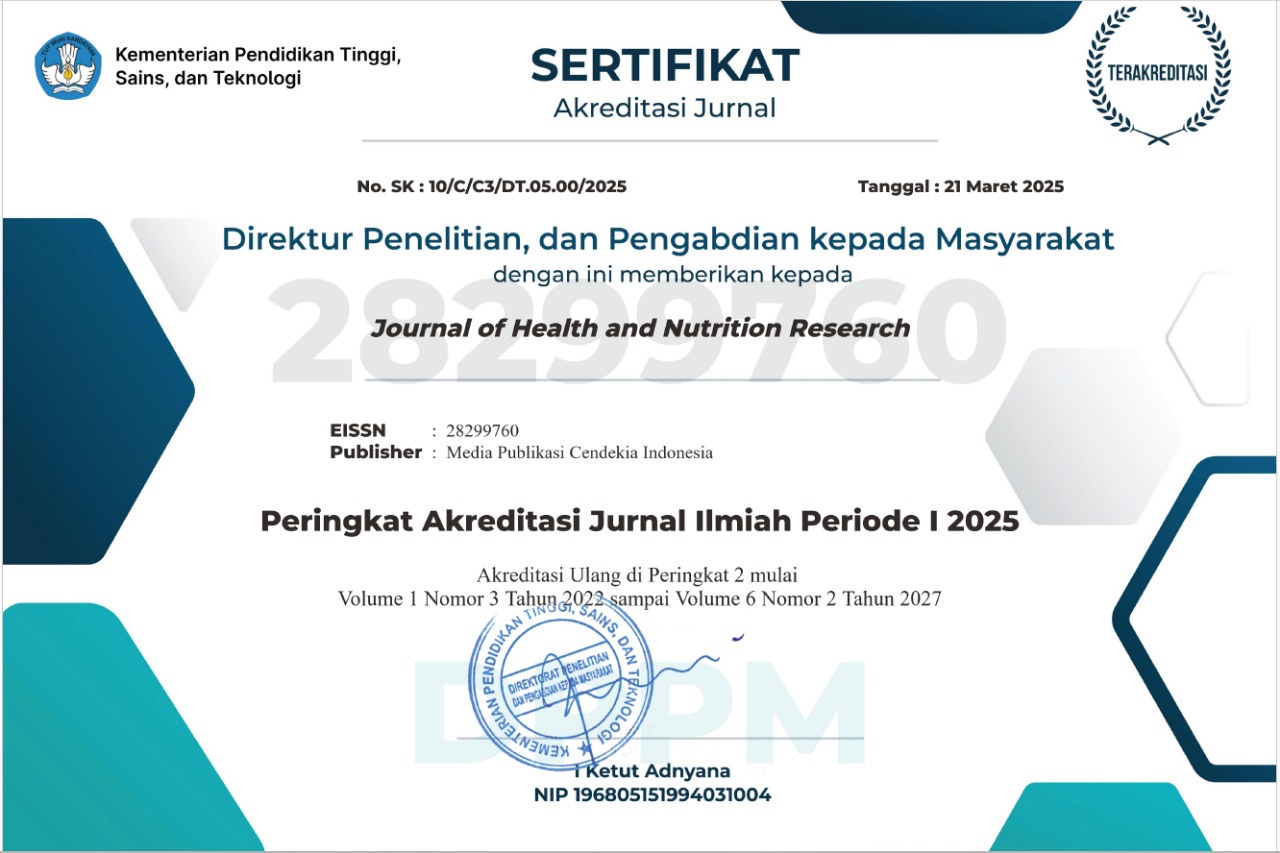Bullying Behavior in Generation Z Youth: Case Study at Palu City DP3A Children's Forum
Keywords:
Bullying, Generation Z, Youth, Child protectionAbstract
This research aims to determine bullying behavior among Generation Z youth at the DP3A Children's Forum in Palu City. This research used qualitative research methods with a case study design. There were 10 informants in the research using purposive sampling techniques. Data management using matrix techniques. The results of research on the behavioral belief variable were that the perpetrator understands the dangers of bullying quite well, but bullying behavior was still carried out. Regarding the evaluation variable or behavioral impact, most did not know and did not feel the impact of bullying. In the behavioral motivation variable, the perpetrators were motivated to bully because it was fun for them and had thought about stopping bullying because they had received warnings and advice from those closest to them. It is suggested that the Women's Empowerment and Child Protection Service (in Indonesia known as DP3A) of Palu City should find out about providing maximum education and guidance to the parents of the perpetrators so that bullying behavior by those who become administrators or new members in the Palu City Nosarara children's forum does not occur. Parents should pay attention and always ask about the activities they are carrying out and understand their children's feelings so that they trust them and do not hesitate to talk about their children's problems
Downloads
References
Setyawan D. Komisi Perlindungan Anak Indonesia (KPAI). 2017 [cited 2023 Dec 31]. KPAI Terima Aduan 26 Ribu Kasus Bully Selama 2011-2017. Available from: https://www.kpai.go.id/publikasi/kpai-terima-aduan-26-ribu-kasus-bully-selama-2011-2017
Hidayati LN, Amalia R. Psychological Impacts On Adolescent Victims Of Bullying: Phenomenology Study. Media Keperawatan Indonesia. 2021;4(3):201.
Faizah F, Amna Z. bullying dan kesehatan mental pada remaja SMA di Banda Aceh. Maret. 2017;3(1):77.
Nasir. Konseling Behavioral: Solusi Alternatif Mengatasi Bullying Anak di Sekolah. Konseling Edukasi: Journal of Guidance and Counseling. 2018;2(2):67–82.
Sugiono. Metode Penelitian Kombinasi (Mix Methods). Bandung: Alfabeta; 2015.
Soetikno N, Arimurti D. Role of Self-Concept and Conformity on Bullies. In Atlantis Press; 2020 [cited 2023 Dec 31]. p. 299–301. Available from: https://www.atlantis-press.com/proceedings/icope-19/125937590
Olweus DA. Bullying in schools: facts and intervention. Kriminalistik. 2018;64(6):1–29.
Anshori IF, Hidayatulloh S, Dewi AS, Viargi R, Yulianti S. Fenomena Cyber Bullying Dalam Kehidupan Remaja. Jurnal Sosial & Abdimas. 2022 Feb 3;4(1):26–32.
Nurmalia L, Nisa B, Safitri M, Dwigustini R. Type, Cause, and Effect of Bullying In A Girl Like Her Movie. J HUM SOC STUD. 2021 Oct 29;5(3):247–51.
Zakiyah EZ, Humaedi S, Santoso MB. Faktor Yang Mempengaruhi Remaja Dalam Melakukan Bullying. Prosiding Penelitian dan Pengabdian kepada Masyarakat. 2017 Jul 31;4(2):129–389.
Mohan TAM, Bakar AYA. A systematic literature review on the effects of bullying at school. SCHOULID Journal. 2021 Feb 19;6(1):35–9.
Tristanti I, Nisak AZ, Azizah N. Bullying dan Efeknya Bagi Siswa Sekolah Dasar di Kabupaten Kudus. Jurnal Ilmu Keperawatan dan Kebidanan. 2020 Mar 3;11(1):1.
Setiadi R, Arsyawina, Kalsum U, Syukur NA, Ramdan IM. Bullying as a Risk Factor of Depression on Undergraduate Health Students. Glob Pediatr Health. 2021 Jun 9;8:2333794X211023711.
Ali SI, Shahbuddin NB. The Relationship between Cyberbullying and Mental Health among University Students. Sustainability. 2022 Jan;14(11):6881.
Pimentel F de O, Méa CPD, Patias ND. Victims of bullying, symptoms of depression, anxiety and stress, and suicidal ideation in teenagers. Acta Colombiana de Psicología. 2020 Dec;23(2):230–40.
Huesmann LR. The Impact of Electronic Media Violence: Scientific Theory and Research. J Adolesc Health. 2007 Dec;41(6 Suppl 1):S6-13.
Dias P, Brito R, Ribbens W, Daniela L, Rubene Z, Dreier M, et al. The role of parents in the engagement of young children with digital technologies: Exploring tensions between rights of access and protection, from ‘Gatekeepers’ to ‘Scaffolders.’ Global Studies of Childhood. 2016 Dec 1;6(4):414–27.
Sulistyawan AY, Suparno S, Fernanda SA, Adawiyah R. Inequality of Power and Gender Relations in Cases of Sexual Violence on Campus: a Study of Legal Philosophy. Jurnal Wawasan Yuridika. 2022 Sep 28;6(2):121–37.
Agung MF. Strategi Guru PAI Dalam Menangani Perilaku Bullying Secara Fisik Pada siswa di Sekolah Menengah Atas Negeri 5 Seluma [Internet] [Skripsi]. [Bengkulu]: Universitas Islam Negeri Fatmawati Sukarno Bengkulu; 2022. Available from: http://repository.iainbengkulu.ac.id/8440/1/M.%20FAIZAL%20AGUNG.pdf
Walther JB. Social media and online hate. Current Opinion in Psychology. 2022 Jun 1;45:101298.
Widiarta MBO, Megaputri PS. Dukungan Keluarga Berhubungan dengan Perilaku sebagai Bully pada Remaja. Jurnal Keperawatan Jiwa. 2021 Mar 28;9(2):323–34.
Published
How to Cite
Issue
Section
Copyright (c) 2023 Arwan Arwan, Syamsul Arif, Sadli Syam, Muhammad Ryman Napirah

This work is licensed under a Creative Commons Attribution-NonCommercial-ShareAlike 4.0 International License.
Most read articles by the same author(s)
- Sadli Syam, Rasyika Nurul Fadjriah, Faralizayani, Behavior of Working Mothers in Exclusive Breast Milk in The Work Area of Bulili Public Health Center , Journal of Health and Nutrition Research: Vol. 1 No. 1 (2022)
- Muhammad Ryman Napirah, Nurdin Rahman, Marsia Laida, Miftahul Haerati Sulaiman, Stefiani Bengan Laba, Factors Related to the Retention of Contract Employee Health Workers at Ulunambo Public Health Centre, Morowali Regency , Journal of Health and Nutrition Research: Vol. 2 No. 2 (2023)
- Rasyika Nurul Fadjriah, Muhammad Jusman Rau, Sadli Syam, Firmansyah Firmansyah, Nurfiana Nurfiana, Community Knowledge and Attitudes about the Health Protocols Implementation during the COVID-19 Pandemic in North Birobuli Village , Journal of Health and Nutrition Research: Vol. 1 No. 2 (2022)
- Novi Inriyanny Suwendro, Bertin Ayu Wandira, Putri Maharani, Relationship Between Characteristics of Class 3 Inspired Patients With Service Satisfaction at Mokopido General Hospital, Tolitoli Regency , Journal of Health and Nutrition Research: Vol. 1 No. 2 (2022)
- Sadli Syam, Rasyika Nurul Fadjriah , Arwan, Melan Susanti, Community Compliance in Implementing Health Protocols in Polma Village, Kulawi District, Sigi Regency , Journal of Health and Nutrition Research: Vol. 2 No. 1 (2023)


















